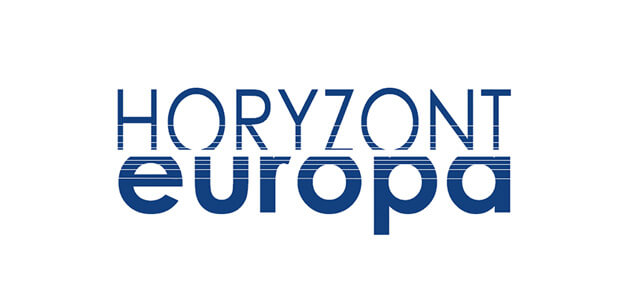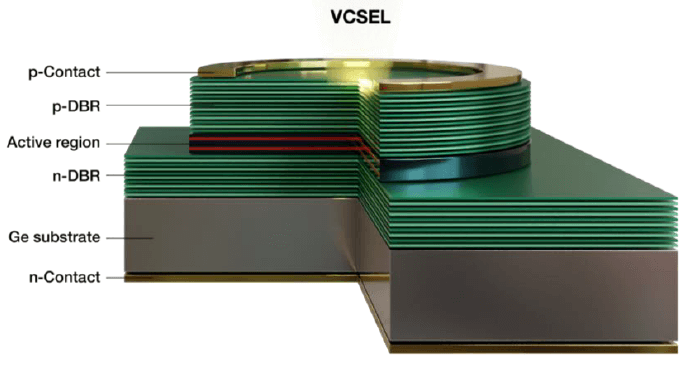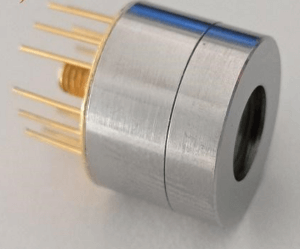Horizon Europe
10 October 2022



A photonic microphone with better-than-human-ear sound quality (PIONEAR)
- GA:
- Duration:
- Overall budget:
- Amount of EU funding (VIGO):
- Project consortium:
- 101129931
- 01/02/2024-31/01/2028
- EUR 2 482 745,00
- EUR 2 482 745,00
- Leader – Lumiary AB (Sweden), OST – OSTSCHWEIZER FACHHOCHSCHULE (Switzerland), VIGO PHOTONICS S.A (Poland), SIEĆ BADAWCZA ŁUKASIEWICZ (Poland), UNIVERSITY COLLEGE CORK (Ireland), POLITECHNIKA LODZKA (Poland), ACCELOPMENT SCHWEIZ AG (Switzerland)
- GA: 101129931
- Duration: 01/02/2024-31/01/2028
- Overall budget: EUR 2 482 745,00
- Amount of EU funding (VIGO): EUR 2 482 745,00
- Project consortium: Leader – Lumiary AB (Sweden), OST – OSTSCHWEIZER FACHHOCHSCHULE (Switzerland), VIGO PHOTONICS S.A (Poland), SIEĆ BADAWCZA ŁUKASIEWICZ (Poland), UNIVERSITY COLLEGE CORK (Ireland), POLITECHNIKA LODZKA (Poland), ACCELOPMENT SCHWEIZ AG (Switzerland)
Microphones play an increasingly important role in how we communicate and perceive the world in our ever more digital and virtual lives. They have developed tremendously in the past decades in terms of size and cost and are now ubiquitous in consumer electronics as well as in professional and industrial applications. Yet, despite all this progress, microphone technology falls short of perceiving audio as well as the human ear: No microphone has self-noise ≤ 0 dB SPL (defined as the threshold of human hearing), the capability to sense sounds up to 130 dB SPL, and with a bandwidth of 20 kHz.
The main objective of PIONEAR is to create the proof-of-concept of a novel miniature microphone with better-than-human-ear sound quality. It will be enabled by a radically new chromometric sensing solution, that PIONEAR will develop by integrating electronic, micro-mechanic and photonic technologies.
To realise this new sensing technology PIONEAR brings together a unique consortium of 4 research partners and 3 SMEs from across Europe, all of which are leading experts in their field, e.g., in manufacturing the special vertical cavity surface-emitting lasers (VCSEL), fabricating the miniature acoustic chamber and membrane and assembling and packaging of the whole device with the highest precision.
We expect PIONEAR to have a profound impact across multiple sectors: Armed with arrays of microphones that have very low noise, devices will be able to listen with programmable directivity and unprecedented selectivity, enabling products with intelligently selective, human-like, hearing. Applications range from consumer electronics and hearing aids to autonomous robots and vehicles,
and environmental monitoring. Moreover, the underlying sensor concept is not limited to microphones. We expect that it will offer similar performance improvements in a broad range of sensor categories, e.g., pressure and ultrasonic sensors, biochemical sensors, gas and aerosol sensors, and accelerometers.
VIGO’s tasks:
– VCSEL design, fabrication and processing (VIGO will produce heterostructures).
– Epitaxial growth of VCSEL structures
– Report on final 940nm VCSEL structures with multiple tunneling nodes
– Participation in the preparation of the validation report.
For more information, visit the project website: https://pionear-project.eu/
Revolutionary Accuracy in waVeguide- and photoacoustic-ENabled atmospheric sensors (RAVEN)
- GA:
- Duration:
- Overall budget:
- Amount of EU funding (VIGO):
- Project consortium:
- 101135787
- 01/04/2024-31/03/2028
- EUR 4 998 772,50
- EUR 4 998 772,50
- Leader – ITA-SUOMEN YLIOPISTO (Finland), BRIGHTERWAVE OY (Finland), PICOPHOTONICS Oy (Finland), TEEM PHOTONICS SA (France), INSTITUT POLYTECHNIQUE DE GRENOBLE (France), POLITECNICO DI TORINO (Italy), UNIVERSITE JEAN MONNET SAINT-ETIENNE (France), UNIWERSYTET GDANSKI (Poland), ASOCIACION CENTRO DE INVESTIGACION COOPERATIVA (Spain), Kasve Oy (Finland), VIGO PHOTONICS S.A (Poland), TAMPEREEN KORKEAKOULUSAATIO SR (Finlandia), GASERA OY (Finland), A2 PHOTONIC SENSORS (France), ILMATIETEEN LAITOS (Finland), CENTRE DE DOCUMENTATION DE RECHERCHES (France), MODUS RESEARCH AND INNOVATION LIMITED (UK)
- GA: 101135787
- Duration: 01/04/2024-31/03/2028
- Overall budget: EUR 4 998 772,50
- Amount of EU funding (VIGO): EUR 4 998 772,50
- Project consortium: Leader – ITA-SUOMEN YLIOPISTO (Finland), BRIGHTERWAVE OY (Finland), PICOPHOTONICS Oy (Finland), TEEM PHOTONICS SA (France), INSTITUT POLYTECHNIQUE DE GRENOBLE (France), POLITECNICO DI TORINO (Italy), UNIVERSITE JEAN MONNET SAINT-ETIENNE (France), UNIWERSYTET GDANSKI (Poland), ASOCIACION CENTRO DE INVESTIGACION COOPERATIVA (Spain), Kasve Oy (Finland), VIGO PHOTONICS S.A (Poland), TAMPEREEN KORKEAKOULUSAATIO SR (Finlandia), GASERA OY (Finland), A2 PHOTONIC SENSORS (France), ILMATIETEEN LAITOS (Finland), CENTRE DE DOCUMENTATION DE RECHERCHES (France), MODUS RESEARCH AND INNOVATION LIMITED (UK)
Anthropogenic greenhouse gas (GHG) emissions and deteriorating air quality are driving climate change and severely impacting human and ecosystem health, respectively. To combat these issues, new and more stringent green regulations are being implemented globally, which existing air monitoring systems are not well equipped to handle. Currently available commercial sensors are expensive, bulky, and frequently require shelter and power from the mains. Field performance also often falls lower than required due to high signal noise and drift. Consequently, there is a need for new air pollution and GHG monitoring systems that offer improved sensitivity, precision, and accuracy while also being inexpensive, compact, and energy efficient. RAVEN will develop the next generation of gas sensing systems, consisting of two miniaturised gas sensors
implementing cutting-edge PIC technology, one in the VIS-SWIR range and one in the MIR range. These sensors will work in tandem across a broad wavelength range (600-3000 nm) to measure concentrations of multiple pollutants and GHGs, including CO2, CO, O3, CH4, N2O, CH3OH, NH3, NO2 in 1-25 ppb LOD range. The sensors will leverage cutting-edge science, including developing a high-power compact dual-supercontinuum source on a chip and on-chip data analysis using a quantum-inspired approach for improved LOD and selectivity of gases and to satisfy the performance, power consumption, size, and cost requirements of end users.
RAVEN will offer an unparalleled, high-performance multi-sensing solution that can be packaged into a single near-universally applicable miniaturised system. The implementation of RAVEN technology will provide Europe with the necessary resources to ensure compliance with the EU Green Deal and enhance the photonic technology capabilities of the EU.
VIGO tasks:
– WP 3 – Data processing chip development (VIGO will develop the detector arrays)
– WP 4 – MIR Sensor development and packaging (VIGO will provide PD and consultation on the PD-readout.)
– WP 7 – Participate in the preparation of the validation report.
Photonics on Germanium – New Industrial Consortium (PhotoGENIC)
- GA:
- Duration:
- Overall budget:
- Amount of EU funding (VIGO):
- Project consortium:
- 101069490
- 01/10/2022 – 30/09/2025
- EUR 4 788 752,00
- EUR 4 788 752,00
- Leader – Technikon Forschungs- Und Planungsgesellschaft MBH (Austria), partners: VIGO Photonics S.A. (Poland), Politechnika Łódzka (Poland), PMDINDUSTRIAL GMBH (Germany), CENTRE NATIONAL DE LA RECHERCHE SCIENTIFIQUE CNRS (France), UMICORE (Belgium), XENOMATIX (Belgium)
- GA: 101069490
- Duration: 01/10/2022 – 30/09/2025
- Overall budget: EUR 4 788 752,00
- Amount of EU funding (VIGO): EUR 4 788 752,00
- Project consortium: Leader – Technikon Forschungs- Und Planungsgesellschaft MBH (Austria), partners: VIGO Photonics S.A. (Poland), Politechnika Łódzka (Poland), PMDINDUSTRIAL GMBH (Germany), CENTRE NATIONAL DE LA RECHERCHE SCIENTIFIQUE CNRS (France), UMICORE (Belgium), XENOMATIX (Belgium)
The Photogenic project aims to design, fabricate, and implement a novel VCSELs epi-structure grown on germanium (Ge) substrates instead of traditional gallium arsenide (GaAs). The critical challenge in the development of VCSELs on Ge is to achieve high crystal quality of grown GaAs/AlGaAs layers on Ge substrates while taking advantage of a better crystallographic lattice sameness between Ge and AlGaAs, which reduces misfit defects density and increases the quantum efficiency of the device. Another technological challenge is focused on the fabrication process development of the VCSEL where Ge replaces GaAs substrate. The goal is to meet the demand of the constantly growing photonics market by providing a novel solution that will increase production yield, reduce defectivity, and introduce reduced environmental impact. One of the project’s valuable benefits is the possibility of integration with the Si technological platform and Photonic Integrated Circuits (PICs) applying Ge epi-layers grown on Si as the substrates for VCSEL epitaxial production. The project’s goal will be developing the new VCSEL industrial technology using Ge large diameter substrates to 200 mm. The production of larger Ge wafers with improved quality, uniformity, and lower defect densities will enhance epitaxial technology on Ge substrates and increase the reliability of the device fabrication process. Demonstration of high-performing devices of Ge-on-Si can unlock potentially large markets from optical data communications to imaging, lighting, and displays, to the manufacturing sector, to life sciences, health care, security, and safety.

Detail information about this project is available on the website: https://horizon-photogenic.eu/
AI Powered human-centered Robot Interactions for Smart Manufacturing
- GA:
- Duration:
- Overall budget:
- Amount of EU funding (VIGO):
- Project consortium:
- 101058589
- 01/10/2022 – 30/09/2025
- EUR 12 533 996,00
- EUR 9 935 751,00
- Leader – NTT DATA (SPAIN) ,UNIVERSITAT POLITECNICA DE VALENCIA (Spain), IKERLAN S. COOP (Spain), FONDAZIONE BRUNO KESSLER (Italy), KATHOLIEKE UNIVERSITEIT LEUVEN (Belgium), INSTITUTO TECNOLOGICO DE INFORMATICA (Spain), TAMPEREEN KORKEAKOULUSAATIO SR (Finland), ROBOTNIK AUTOMATION SLL (Spain), COMAU SPA (Italy), MTU AUSTRALO ALPHA LAB (Estonia), TEKNOPAR ENDUSTRIYEL OTOMASYON SANAYI VE TICARET ANONIM SIRKETI (Türkiye), SILVERLINE ENDUSTRI VE TICARET A.S. (Türkiye), SIEC BADAWCZA LUKASIEWICZ – PRZEMYSLOWY INSTYTUT AUTOMATYKI I POMIAROW PIAP (Poland), VIGO Photonics S.A. (Poland), WINGS ICT SOLUTIONS INFORMATION & COMMUNICATION TECHNOLOGIES IKE (Greece), ATHINAIIKI ZYTHOPIIA ANONYMOS ETAIRIA (Greece), PROFACTOR GMBH (Austria), KEBA GROUP AG (Austria), ASOCIACION ESPANOLA DE NORMALIZACION (Spain), NTT DATA ROMANIA SA (Romania), ANDREU WORLD DESIGN SA (Spain), ASOCIATIA TRANSILVANIA IT (Romania).
- GA: 101058589
- Duration: 01/10/2022 – 30/09/2025
- Overall budget: EUR 12 533 996,00
- Amount of EU funding (VIGO): EUR 9 935 751,00
- Project consortium: Leader – NTT DATA (SPAIN) ,UNIVERSITAT POLITECNICA DE VALENCIA (Spain), IKERLAN S. COOP (Spain), FONDAZIONE BRUNO KESSLER (Italy), KATHOLIEKE UNIVERSITEIT LEUVEN (Belgium), INSTITUTO TECNOLOGICO DE INFORMATICA (Spain), TAMPEREEN KORKEAKOULUSAATIO SR (Finland), ROBOTNIK AUTOMATION SLL (Spain), COMAU SPA (Italy), MTU AUSTRALO ALPHA LAB (Estonia), TEKNOPAR ENDUSTRIYEL OTOMASYON SANAYI VE TICARET ANONIM SIRKETI (Türkiye), SILVERLINE ENDUSTRI VE TICARET A.S. (Türkiye), SIEC BADAWCZA LUKASIEWICZ – PRZEMYSLOWY INSTYTUT AUTOMATYKI I POMIAROW PIAP (Poland), VIGO Photonics S.A. (Poland), WINGS ICT SOLUTIONS INFORMATION & COMMUNICATION TECHNOLOGIES IKE (Greece), ATHINAIIKI ZYTHOPIIA ANONYMOS ETAIRIA (Greece), PROFACTOR GMBH (Austria), KEBA GROUP AG (Austria), ASOCIACION ESPANOLA DE NORMALIZACION (Spain), NTT DATA ROMANIA SA (Romania), ANDREU WORLD DESIGN SA (Spain), ASOCIATIA TRANSILVANIA IT (Romania).

AI-PRISM is an industrial-end-user driven project that will provide a human-centred AI-based solutions ecosystem targeted to manufacturing scenarios with tasks difficult to automate and where speed and versatility are essential. The result will be an integrated and scalable ecosystem with installation-specific solutions for semi-automated and collaborative manufacturing in flexible production processes and for which specific robotic programming skills will not be required, thanks to its programming-bydemonstration modules.
The ecosystem will be composed by four main pillars including:
1) Human Centred Collaborative Robotic Platform,
2) Human Robot Cooperation Ambient,
3) Social Human-Agent-Robots Teams Collaboration and
4) Open Access Network Portal.
In order to facilitate the assessment of the performance, transferability, scalability and large-scale deployment of these solutions, the demonstrations will be conducted under real operational environments in four pilot involving key manufacturing sectors.
VIGO, in cooperation with the Łukasiewicz Research Network – Industrial Research Institute for Automation and Measurments – PIAP, will implement the results of partners’ research work in its production environment to improve one of the complex stages of production of unique immersion lenses.
The project is not just aiming at quantitative improvements in a specific sector, but to use technology innovation to support a change of paradigm where AI, robotics and Social Sciences and Humanities (SSH) integrated in the manufacturing domain for the improvement of flexible production processes, become a feasible and widespread alternative for European factories, especially SMEs. To achieve this, the project relies on a strong consortium of 25 partners from 12 countries including international cooperation with Korea. The consortium brings together all the actors of the Human Robot Collaboration (HRC) value chain including relevant competence centres, technology providers, equipment providers, integrators, and manufacturers/end users; and involves key expert partners in SSH, standardisation, exploitation, and dissemination.
OPTICALLY-PUMPED MAGNETOMETER ARRAYS FOR MAGNETOENCEPHALOGRAPHY (OPMMEG)
- GA:
- Duration:
- Overall budget:
- Amount of EU funding (VIGO):
- Project consortium:
- 101099379
- 01/12/2022 – 30/11/2025
- EUR 2 483 327,50
- EUR 500 000,00
- TEKNOLOGIAN TUTKIMUSKESKUS VTT OY – Finland, FUNDACIO INSTITUT DE CIENCIES FOTONIQUES – Spain, AALTO KORKEAKOULUSAATIO SR – Finland, MEGIN OY – Finland, VIGO Photonics S.A. – Poland
- GA: 101099379
- Duration: 01/12/2022 – 30/11/2025
- Overall budget: EUR 2 483 327,50
- Amount of EU funding (VIGO): EUR 500 000,00
- Project consortium: TEKNOLOGIAN TUTKIMUSKESKUS VTT OY – Finland, FUNDACIO INSTITUT DE CIENCIES FOTONIQUES – Spain, AALTO KORKEAKOULUSAATIO SR – Finland, MEGIN OY – Finland, VIGO Photonics S.A. – Poland
Magnetoencephalography (MEG) is a non-invasive cryogenic imaging technique for investigating human brain function, uniquely capable of measuring brain activity with good spatial and temporal resolution. MEG operates by detecting magnetic fields naturally produced by the brain for imaging its electrical activity. Epilepsy diagnosis is the most advanced clinical application for MEG. Six million people are affected by epilepsy in the European Union alone, with about 300 000 new cases every year. Use cases for MEG are growing, for example diagnosis of mild traumatic brain injuries (TBI), which represents more than half of the 2,5 million new TBI cases each year in the European Union. Clinical use of MEG is at present limited to large hospitals and elite clinics due to space, cost and the need for specialized cryogenics technicians. Optically pumped magnetometers (OPMs) are a cryogen-free quantum sensor technology with extraordinary magnetic sensitivity. One of key components of OPMs is VCSEL. Relative to cryogenic methods, OPM provide a superior balance of sensitivity, size and proximity to the cortex, but have not yet been implemented in technologies that are simultaneously manufacturable at scale, high-performing, and cost-effective.
In the framework of OPMMEG project will develop and produce OPMs array, that will correspond to these requirements for wide-spread use of OPMs in MEG, and demonstrate its application to magnetoencephalography. The project connects together several world leaders in the fields of development and producing quantum sensor components and systems, commercial MEG systems and MEG applications for medical purposes. Eventual results of the project are a development of photonic market, including establishment of a value chain from photonic devises to innovative systems, that will connect all relevant stakeholders.
The consortium is composed of 2 SMEs, 2 world-class research organizations and 1 university from 3 European countries. The position of these organizations in their respective markets guarantees that the project results will be widely exploited, providing the companies with a technological advantage over their worldwide competitors thus creating new high-tech jobs and technology leadership in the European Union.
Main objectives of VIGO Photonics S.A. in the project will be:
- Development, design and growth an appropriate VCSEL arrays;
- Processing of VCSELs and optoelectronic tests;
- Participation in development of a validation report.
BROADBAND MEMS-BASED INFRARED SPECTROMETERS: THE CORE OF A MULTIPURPOSE SPECTRAL SENSING PHOTONIC PLATFORM (BROMEDIR)
- GA:
- Duration:
- Overall budget:
- Amount of EU funding (VIGO):
- Project consortium:
- 101092697
- 01/01/2023 – 30/06/2026
- EUR 4 999 821,25
- EUR 4 999 821,25
- CyRIC – CYPRUS RESEARCH AND INNOVATION CENTER LTD (Cyprus), TECHNISCHE UNIVERSITAET WIEN (Austria), SI-WARE-SYSTEMS (France), NANOPLUS NANOSYSTEMS AND TECHNOLOGIES GMBH (Germany), UNIVERSITE GUSTAVE EIFFEL (France), VIGO PHOTONICS (Poland), CENTRE WALLON DE RECHERCHES AGRONOMIQUES (Belgium), SENSEEN (France), QUANTARED TECHNOLOGIES GMBH (Austria)
- GA: 101092697
- Duration: 01/01/2023 – 30/06/2026
- Overall budget: EUR 4 999 821,25
- Amount of EU funding (VIGO): EUR 4 999 821,25
- Project consortium: CyRIC – CYPRUS RESEARCH AND INNOVATION CENTER LTD (Cyprus), TECHNISCHE UNIVERSITAET WIEN (Austria), SI-WARE-SYSTEMS (France), NANOPLUS NANOSYSTEMS AND TECHNOLOGIES GMBH (Germany), UNIVERSITE GUSTAVE EIFFEL (France), VIGO PHOTONICS (Poland), CENTRE WALLON DE RECHERCHES AGRONOMIQUES (Belgium), SENSEEN (France), QUANTARED TECHNOLOGIES GMBH (Austria)
The BROMEDIR project aims to tackle the increasing need for miniaturised sensors providing simultaneous access to multiple chemical and biochemical parameters sensing. Optical spectroscopy is the golden standard for the identification and quantitative measurement of several chemicals simultaneously, using a single device: a spectrometer. In BROMEDIR project, this new generation of miniature spectrophotometers will be used to develop sensing platforms, to be demonstrated in 3 application domains:
- a) sustainable farming,
- b) hydrogen supply chain quality monitoring
and
- c) fuel quality control.
The main tasks of VIGO Photonics S.A. in this project are:
– development of a modern uncooled mid-infrared photonic detector;
– participation in the integration and testing of the ultra-compact FTIR spectrophotometer;
– participation in the validation of the FTIR spectrophotometer in appropriate environments;
– participation in performance evaluation and development of recommendations.
Additional information on the progress of the BROMEDIR project is available on the website: https://bromedir.eu and in social media:
- LinkedIn: https://lnkd.in/ePWZW5Av
- Meta (Facebook): https://www.facebook.com/people/Bromedir/100089223107873/
INNOVATIVE ENVIRONMENTAL MULTISENSING FOR WATERBODY QUALITY MONITORING AND REMEDIATION ASSESSMENT (IBAIA)
- GA:
- Duration:
- Overall budget:
- Amount of EU funding (VIGO):
- Project consortium:
- 101092723
- 01/12/2022 – 30/11/2026
- EUR 4 786 435,00
- EUR 4 786 435,00
- Centre National De La Recherche Scientifique (CNRS) – France, Mirsense – France, Institut Francais De Recherche Pour L’exploitation De La Mer – France, Tampereen Korkeakoulusa atio Sr – Finland, Klearia – France, Univerzita Pardubice – the Czech Republic, Centre De Documentation De Recherches Et D Experimentation Sur Les Pollutions Accidentelles Des Eaux Association – France, Scirpe – France, Universite De Mons – Belgium, Modus Research And Innovation Limited – United Kingdom; Argotech As – the Czech Republic, Universitaet Duisburgessen – Denmark, Ita-suomen Yliopisto – Finland, Bureau De Recherches Geologiques Et Minieres – France, Leibnizinstitut Fuer Photonische Technologien E.v. – Germany, VIGO Photonics S.A. – Poland, Microliquid Sl – Estonia
- GA: 101092723
- Duration: 01/12/2022 – 30/11/2026
- Overall budget: EUR 4 786 435,00
- Amount of EU funding (VIGO): EUR 4 786 435,00
- Project consortium: Centre National De La Recherche Scientifique (CNRS) – France, Mirsense – France, Institut Francais De Recherche Pour L’exploitation De La Mer – France, Tampereen Korkeakoulusa atio Sr – Finland, Klearia – France, Univerzita Pardubice – the Czech Republic, Centre De Documentation De Recherches Et D Experimentation Sur Les Pollutions Accidentelles Des Eaux Association – France, Scirpe – France, Universite De Mons – Belgium, Modus Research And Innovation Limited – United Kingdom; Argotech As – the Czech Republic, Universitaet Duisburgessen – Denmark, Ita-suomen Yliopisto – Finland, Bureau De Recherches Geologiques Et Minieres – France, Leibnizinstitut Fuer Photonische Technologien E.v. – Germany, VIGO Photonics S.A. – Poland, Microliquid Sl – Estonia
Environmental water pollution is a growing global issue, leading to increasing regulations and concurrent increased demand for improved water quality monitoring solutions to meet the European Green Deal objectives. Real-time in-situ devices offer hope for faster and more effective monitoring of the aquatic environment. On the global market (mainly – outside the EU) there are solutions for monitoring the aquatic environment, but the existing in-situ solutions detect very limited parameters and are limited by high costs, low reliability and high energy consumption. In order to better respond to the needs of end users and to improve methods and solutions for monitoring the quality of the aquatic environment, the European and global market needs the implementation of modern pollutant detection technologies. The main objective of the IBAIA project is to develop four innovative, optimized and functional sensor modules based on complementary photonic and electrochemical technologies.
The four modules will include photonic sensors in the visible and near-infrared for the detection of microplastics and salinity measurement, and mid-infrared for organic chemical detection; electrochemical sensors for nutrient salts and heavy metal detection; and chemical transducer coupled with an optical sensor (Optode) for sensing physicochemical parameters. Within the project, these four sensors will be designed, tested, and packaged into a modular advanced multi-sensing system that can monitor a broader range of parameters with greater accuracy than existing solutions while also being more cost-effective, reliable, environmentally friendly in manufacturing, and user-friendly in operation. The integrated multi-sensing system will be tested at the end of the project in real in situ conditions.
In early December 2022, a multidisciplinary team of European scientists and researchers launched a new, four-year research project to develop cutting-edge in situ sensors for real-time water quality monitoring to improve water quality monitoring processes, enable the development of the best remediation activities and facilitating the effective management of water treatment in support of the EU Zero Pollution for Air, Water, and Soil Action Plan, a key component of the European Green Deal.
The IBAIA project is expected to result in a highly competitive product that will serve as a one-size-fits-all solution for many end users, with a highly EU-centric supply chain, and provide technological innovation that will aid in the achievement of the European Green Deal actions.
In the framework of the IBAIA project, VIGO Photonics S.A. will participate in the implementation of such tasks:
– participation in the development of Mid-IR transducers;
– production of QSL heterostructure (epitaxy) and photonic detector;
– participation in the integration of the VIGO’s manufactured photonic detector into the sensor module;
– participation in factory and environmental acceptance tests of the manufactured detector.
Additional information on the progress of the IBAIA project is available at the following link: www.ibaia.eu

Photonic detector (manufactured by VIGO Photonics S.A.)


 English
English Polski
Polski











